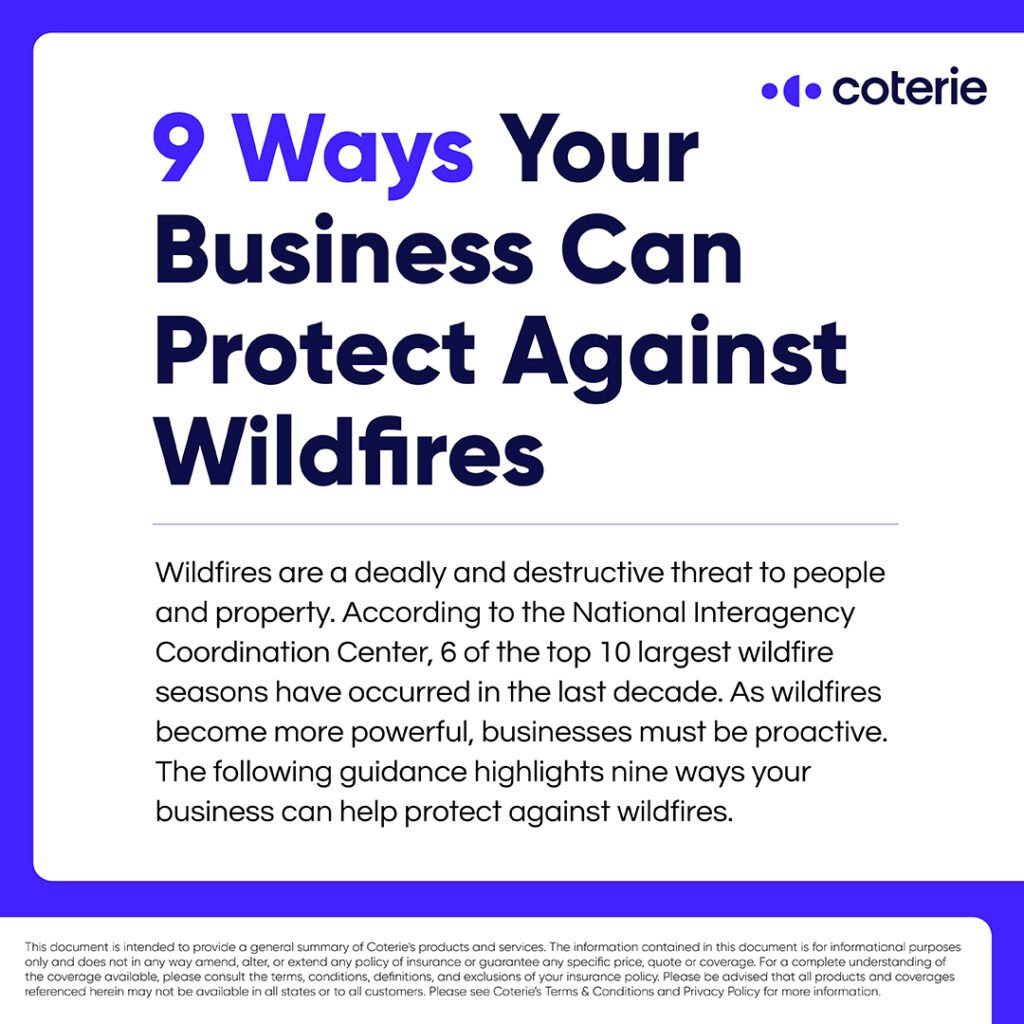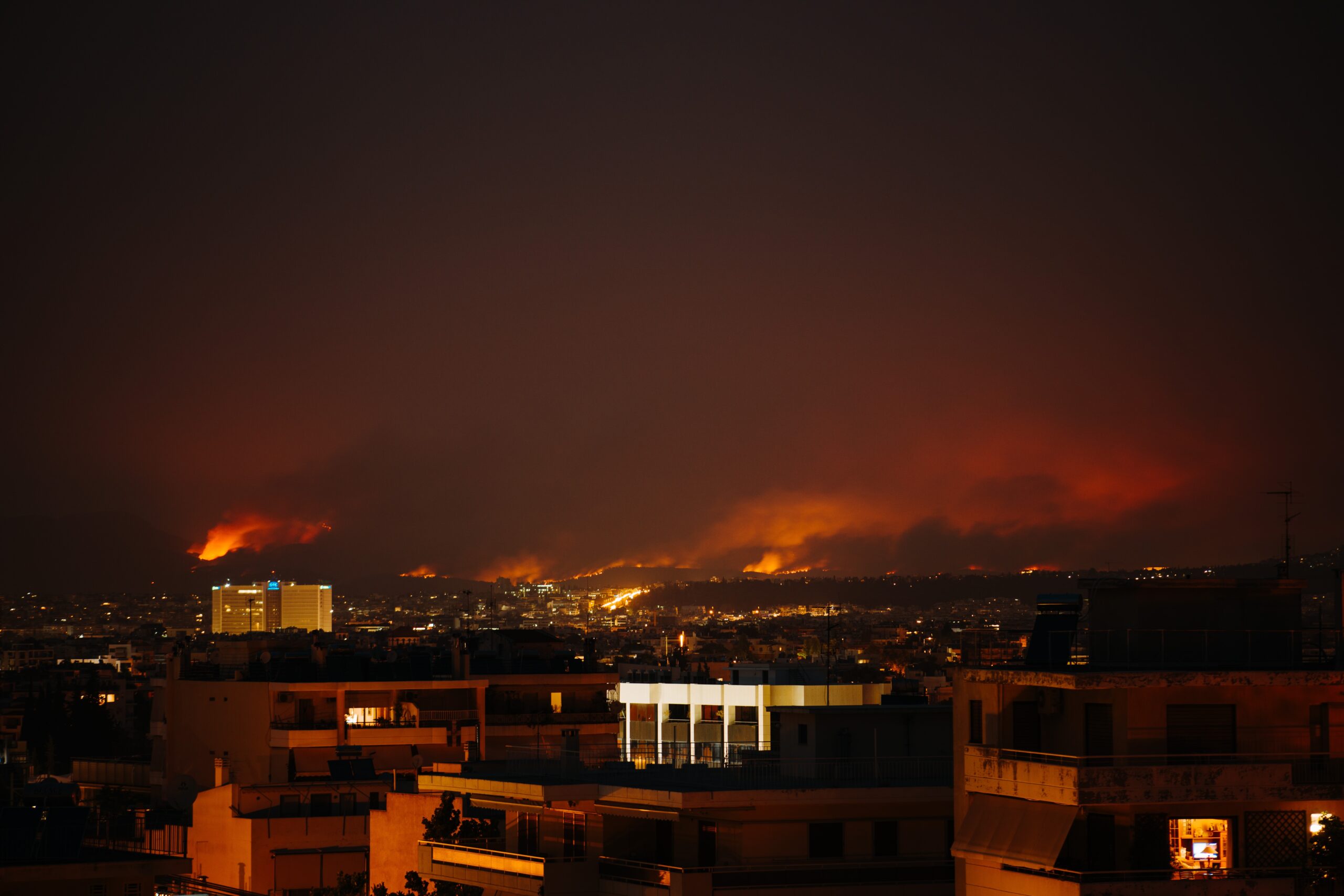Wildfires pose a significant threat to businesses, with their devastating potential increasing over the years. As wildfire seasons become longer and more destructive, businesses, especially those in high-risk areas, must take proactive measures to safeguard their assets, operations, and communities. In this article, we will explore the dangers of wildfires, their potential impact on businesses, and crucial steps that insurance agents and brokers can recommend for effective wildfire risk management for small businesses.
Understanding the Dangers
Wildfires are often human-caused, with factors like unattended campfires, discarded cigarettes, and even intentional acts of arson contributing to their ignition. Once ignited, wildfires can spread rapidly, exposing businesses to several dangers:
1. Direct Flames: Wildfire flames that come into contact with buildings or combustible items can quickly ignite structures and materials, leading to significant property damage.
2. Airborne Embers: Embers produced by burning wildfires, along with flammable materials, can be carried by wind and ignite new fires. These embers are a leading cause of building ignitions.
3. Radiant Heat: Intense radiant heat can set combustible products on fire, including wood siding, making materials more susceptible to ignition.
Wildfire Risk Management for Small Businesses:
Insurance agents and brokers play a vital role in helping small business owners prepare for and mitigate the risks posed by wildfires. Here are actionable steps that you can advise your clients to take:
1. Assess Vulnerabilities: Conduct a thorough assessment of the commercial property to identify potential vulnerabilities. Consider factors like proximity to vegetation, roofing materials, and building attachments.
2. Reduce Fuel Loads: Choose fire-resistant or noncombustible materials for roofing, exterior walls, windows, and other attachments. Properly maintain the property’s landscaping by strategically placing trees, shrubs, and vegetation to create defensible spaces.
3. Create Buffer Zones: Establish three buffer zones around the building to prevent the spread of fire and embers:
- Zone 1 (30 feet from the building): Clear away dry vegetation, remove overhanging branches, and avoid storing combustible materials.
- Zone 2 (30-60 feet from the building): Maintain proper spacing between trees and shrubs, prune consistently, and relocate combustible items to Zone 3.
- Zone 3 (60 feet or more from the building): Remove dead plants and trees, create firebreaks, and expand this zone on slopes to prevent fast-moving fires.
4. Install Class A Rated Roofing: Recommend Class A-rated roofing materials like concrete or clay tiles, fiberglass asphalt composition shingles, and metal roofs, as they offer the highest fire resistance.
5. Regular Maintenance: Advise clients to regularly clear debris from gutters and roofs, especially after storms, to minimize ignition risks.
6. Storage and Ventilation: Ensure combustible items like wooden pallets and flammable liquids are stored safely away from the building. Install 1/8-inch metal screens on vents and equip chimney outlets with spark arrestors to prevent ember intrusion.

As the frequency and intensity of wildfires continue to rise, small business owners must take proactive steps to protect their assets and operations. Insurance agents and brokers play a crucial role in offering wildfire risk management for small businesses. By understanding the dangers of wildfires and implementing mitigation measures, businesses can minimize property damage, costly interruptions, and potential closures. For risk management guidance and support, reach out to Coterie Insurance today.





